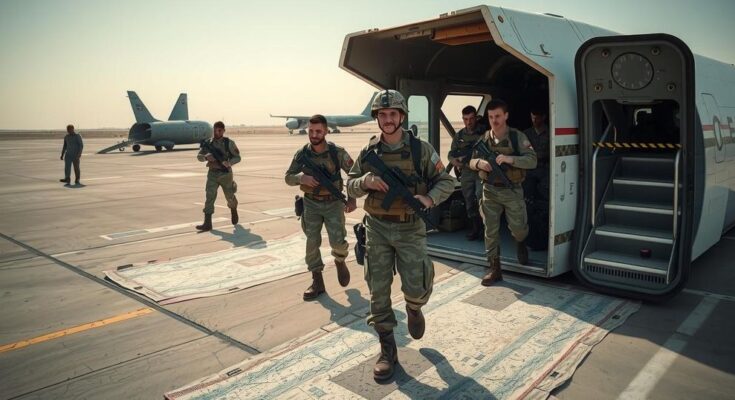Iran has begun evacuating military officials and personnel from Syria due to a resurgent rebel offensive, reflecting challenges in supporting President Bashar al-Assad. Key commanders from the Quds Forces are among those being relocated to Iraq and Lebanon, as concerns grow over the Syrian army’s willingness to engage in combat.
Iran has commenced the evacuation of its military personnel and commanders from Syria, signaling a potential shift in its support for President Bashar al-Assad amid growing rebel offensives. This operation, involving key officials from the Quds Forces, aims to relocate individuals to Iraq and Lebanon. Reports indicate that many are leaving through the Iranian Embassy in Damascus and associated military bases. The evacuations underscore the challenges Iran faces in retaining its influence, compounded by the reluctance of Syrian forces to engage in combat. Expert insights suggest that the Iranian withdrawal reflects a broader strategic recalibration within the region, prompted by the Assad regime’s faltering military capacity.
This development occurs in the context of an escalating conflict in Syria, where Iranian forces have been a critical support element for Assad’s regime against various rebel factions. The Quds Forces, which play a significant role in Iran’s regional military endeavors, are now seemingly withdrawing their presence as Syrian military effectiveness wanes. This strategic retreat highlights the precariousness of Iran’s investments in the Syrian conflict, where its ability to influence outcomes is increasingly being challenged.
In summary, Iran’s decision to evacuate military officials from Syria marks a significant turning point in its strategic engagement in the region. As Syrian forces grapple with a resurgent rebel offensive, this withdrawal may indicate a deterioration of Iran’s military leverage in supporting the Assad regime. The implications of this shift could reverberate throughout the broader Middle Eastern geopolitical landscape, potentially altering alliances and conflict dynamics.
Original Source: www.japantimes.co.jp




